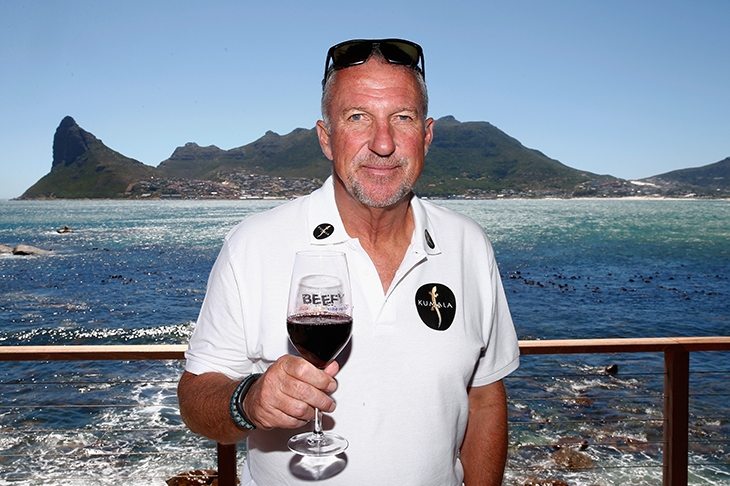England. On a glorious summer afternoon in the Sussex countryside, I had been invited to watch polo at Cowdray Park, the game’s equivalent of Lord’s. A beautiful lawn, overlooked by the ruins of a great Elizabethan house burnt down in the 1790s; a sky with gentle, Constable clouds; classically English trees — this is Glyndebourne with ponies instead of music. There is a gracious, aesthetic harmony between rider and pony. As Churchill put it, ‘the outside of a horse is good for the inside of a man’. Equally, a pretty girl rarely looks more handsome than when mounted in the saddle.
That is the easy bit. The first point that always strikes me about the game is the combination of beauty and danger. During the match, everything moves extraordinarily fast. Even though the umpires are fully alert to prevent collisions, it is surprising that there are not more casualties. From the other end of the aesthetic scale, I was reminded of motorised rickshaws in Delhi. A clamourous mob of them converge. Fortunately, they do not go as fast as polo ponies. Even so, it seems impossible to avoid a pile-up. You close your eyes, brace yourself, yet somehow, no one has crashed.
I was the guest of Kristóf Szalay-Bobrovniczky, the Hungarian ambassador, a delightful fellow often saluted in this magazine (an admiration which he reciprocates). Although this was not a solemn occasion, our talk strayed into history, and contrasts. We were not far from the Channel, which explains so much about the gentleness of English history. That great invasion-defying moat has made places like Cowdray possible. Compare Hungary, with no equivalent defence against cavalry or tanks. Much of human history is a cry of pain. After the Battle of Mohacs in 1526, which brought an end to the Hungarian medieval monarchy, and the ensuing Ottoman conquest, Hungary’s cries were especially plangent. This was a proud and gallant people, gay in the proper sense, makers of music, with a capacity for joie de vivre which dances well beyond Anglo–Saxon stolidity. Yet they had to endure oppression under the Turks, which continued during most of the Habsburg period. That ended with the first world war, a period of terrible suffering even by the standards of the time. Between the wars, Admiral Horthy did his best. Thereafter, the Nazis and Communists did their worst. 1956: one of the most glorious moments of post-war history, when the patriots, heroes and martyrs of the uprising sacrificed life in order to sanctify freedom. Finally, freedom achieved, and those who fell to keep the ideal alive could be honoured by a grateful nation.
That nation’s current leader, Viktor Orban, is controversial. But those who rush to criticise him should remember two crucial points. First, and however much Brussels resents him, he is popular. That makes him even more unacceptable to the European nomenklatura. Second — one reason for the popularity — Hungarians do not want to be told what to do by foreigners, especially Germans.
Our drinking was appropriate to the weather. Plenty of champagne — Perrier-Jouët — was followed by lots of Pimm’s. Pimm’s can be tricky, for it will always pretend to be non–alcoholic. That is not true, as those who use it for rehydration will discover. There was also a Sicilian white, Catarratto. At only 12 degrees alcohol, barely stronger than water, it was as innocuous as rejoicing in a sun-drenched landscape from the safety of a parasol.
The ponies charged and thrilled, a scene worthy of Degas or Munnings, well earning the salutation of a raised ice-cold glass. Best of all, as we relaxed into the joys of the human condition and detached ourselves from its more truculent aspects, no one mentioned the EU.






Comments